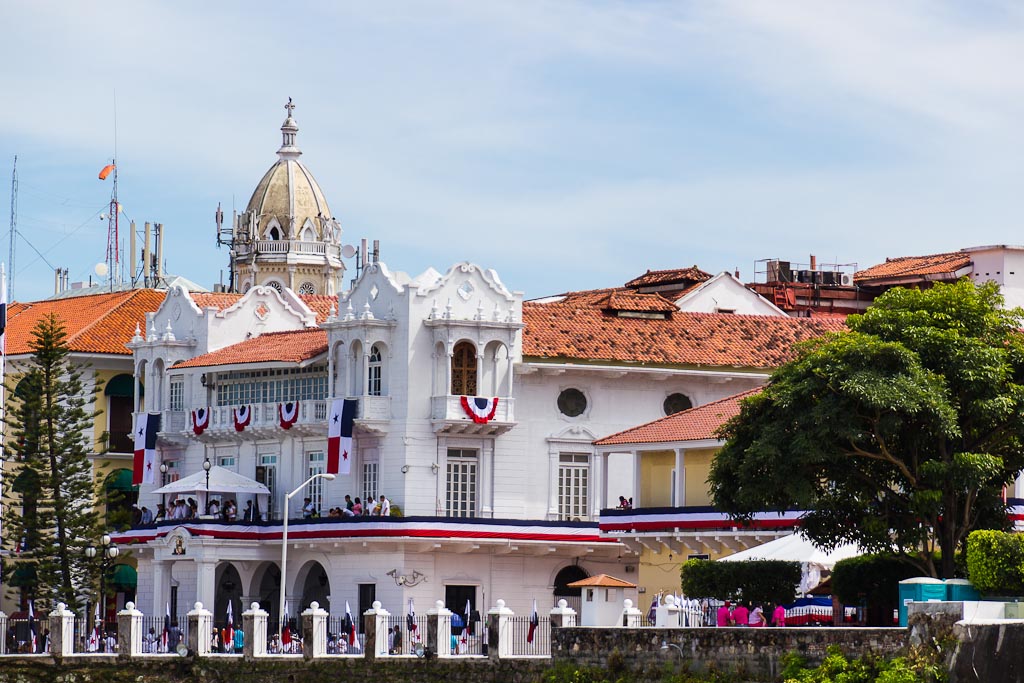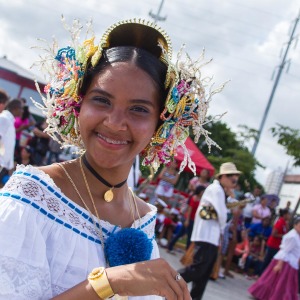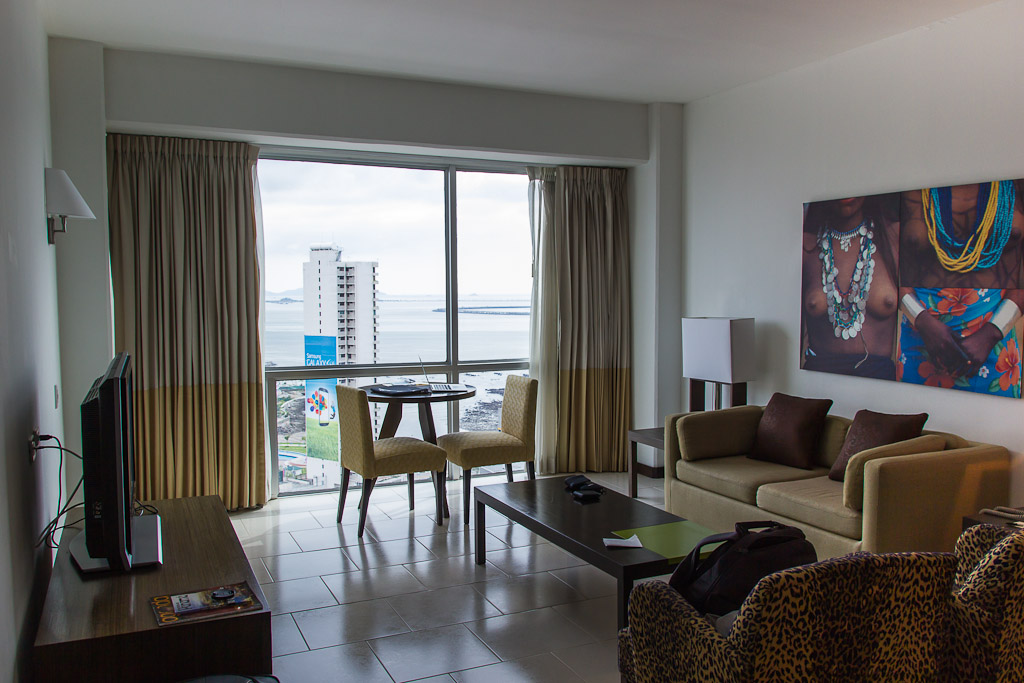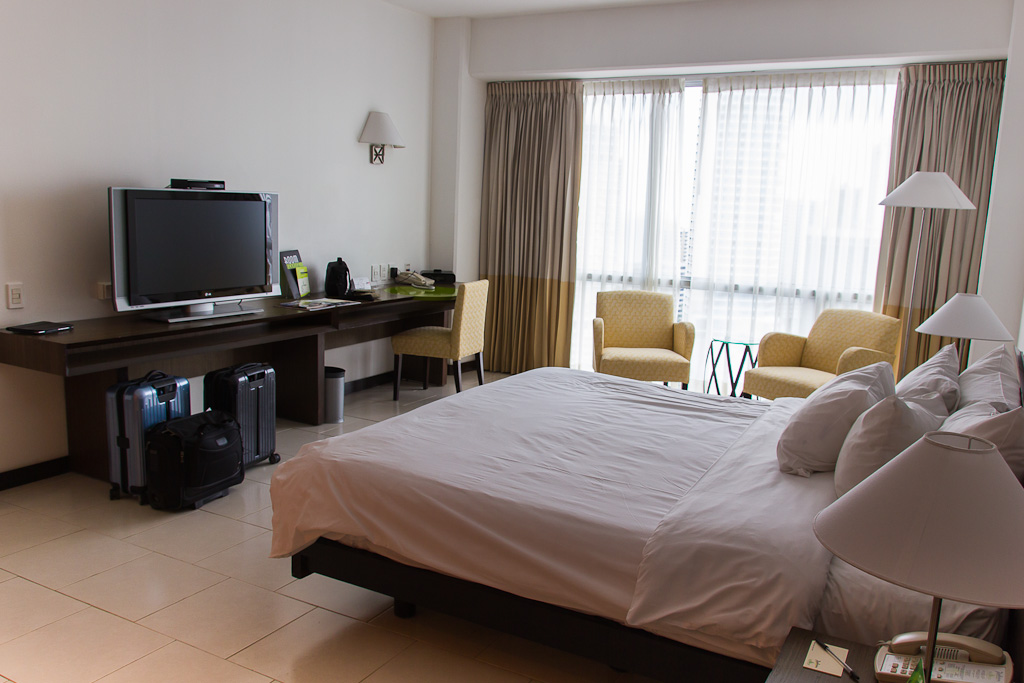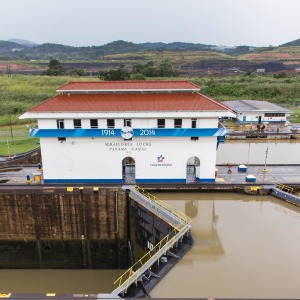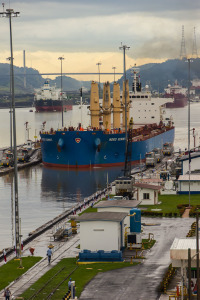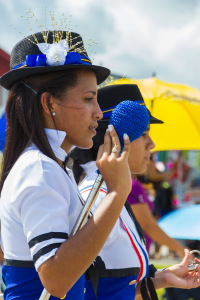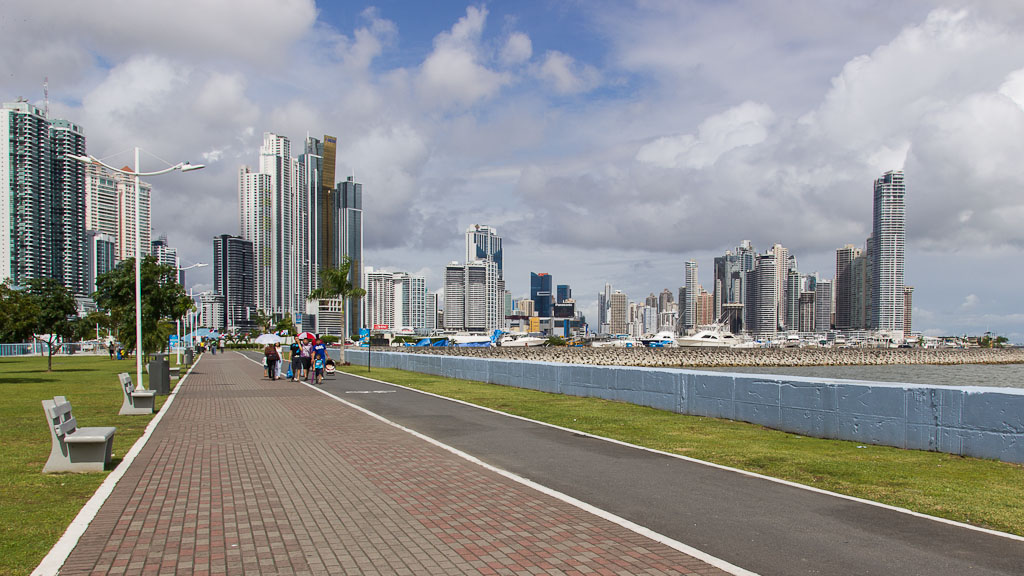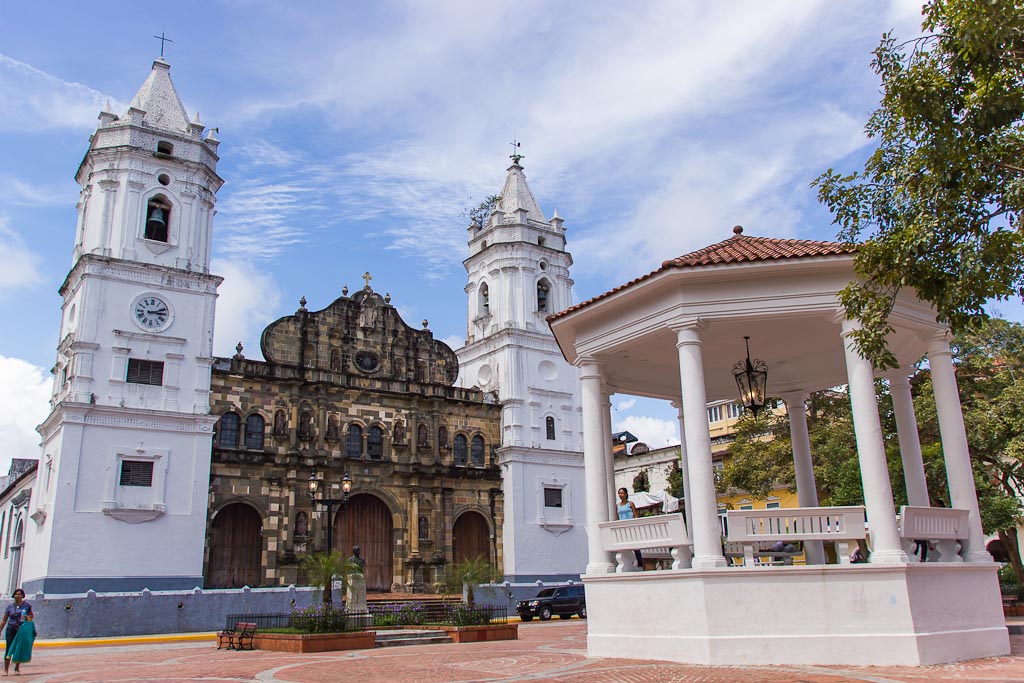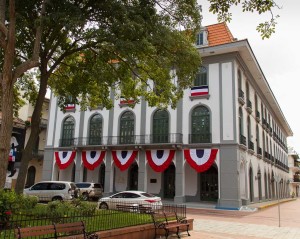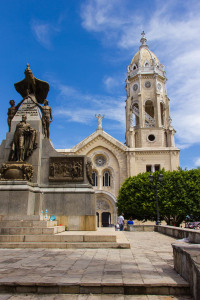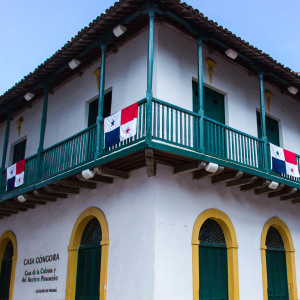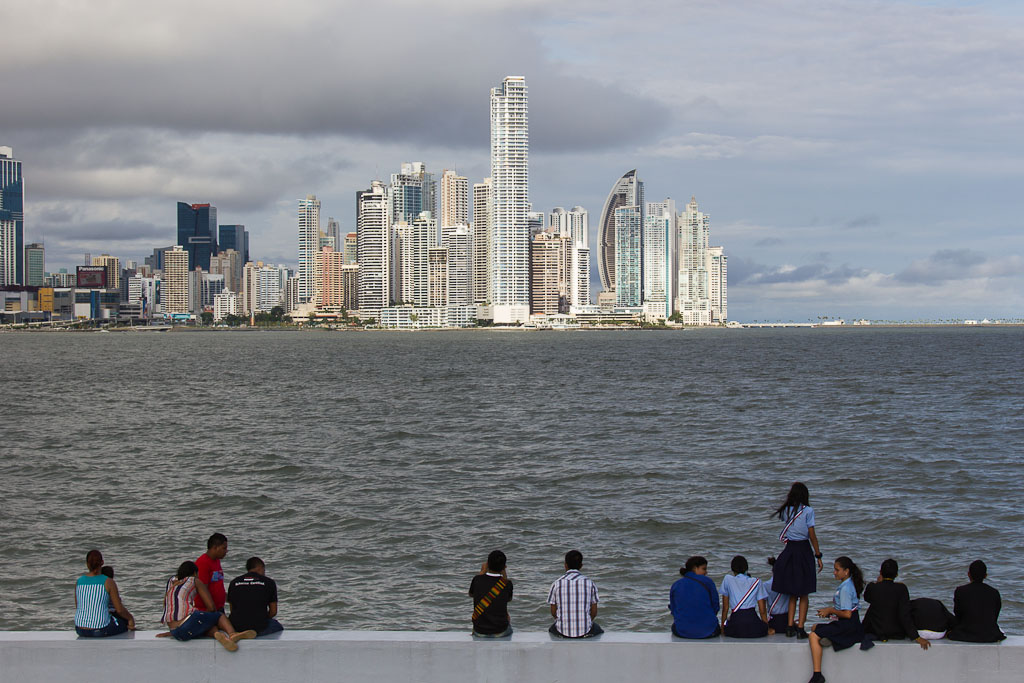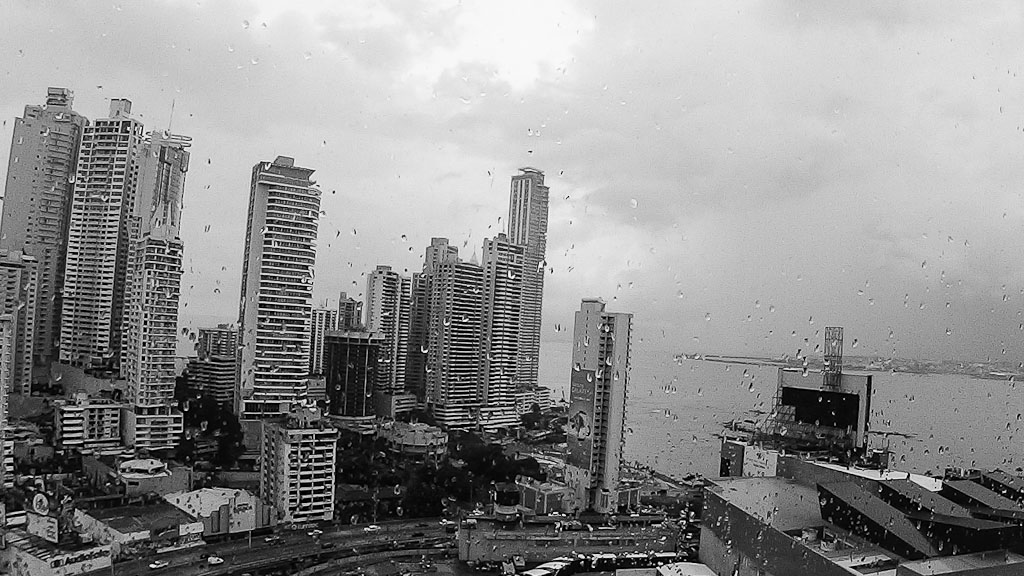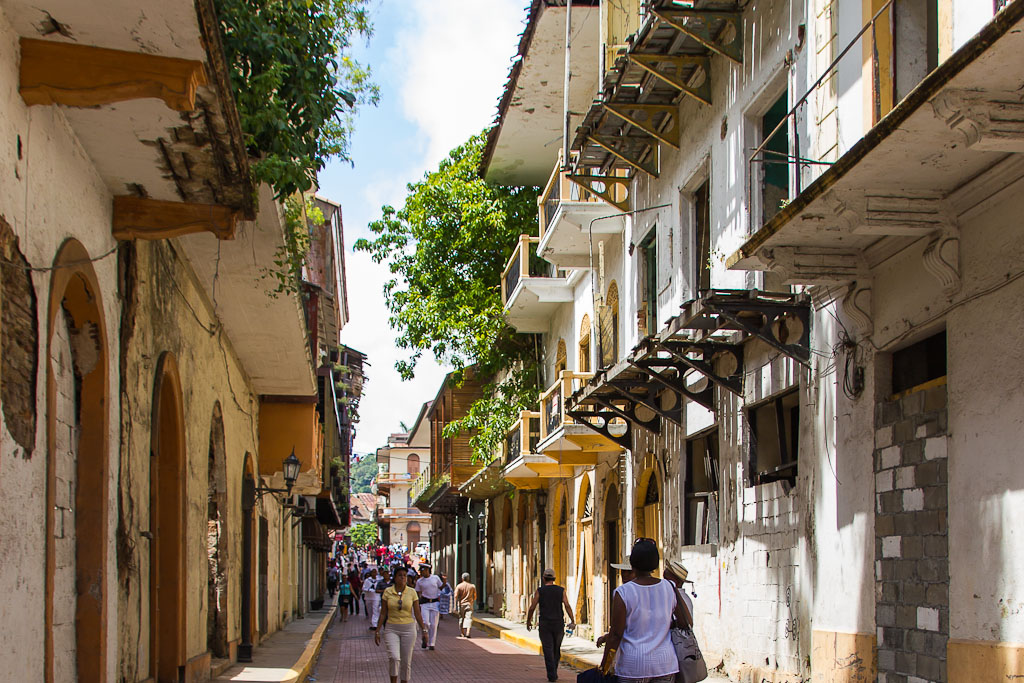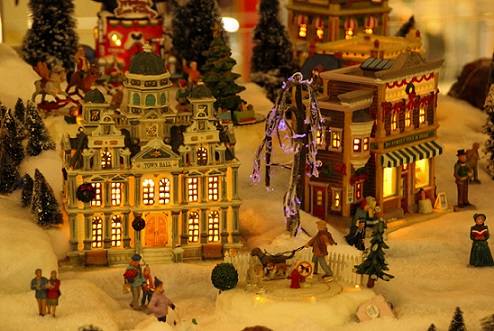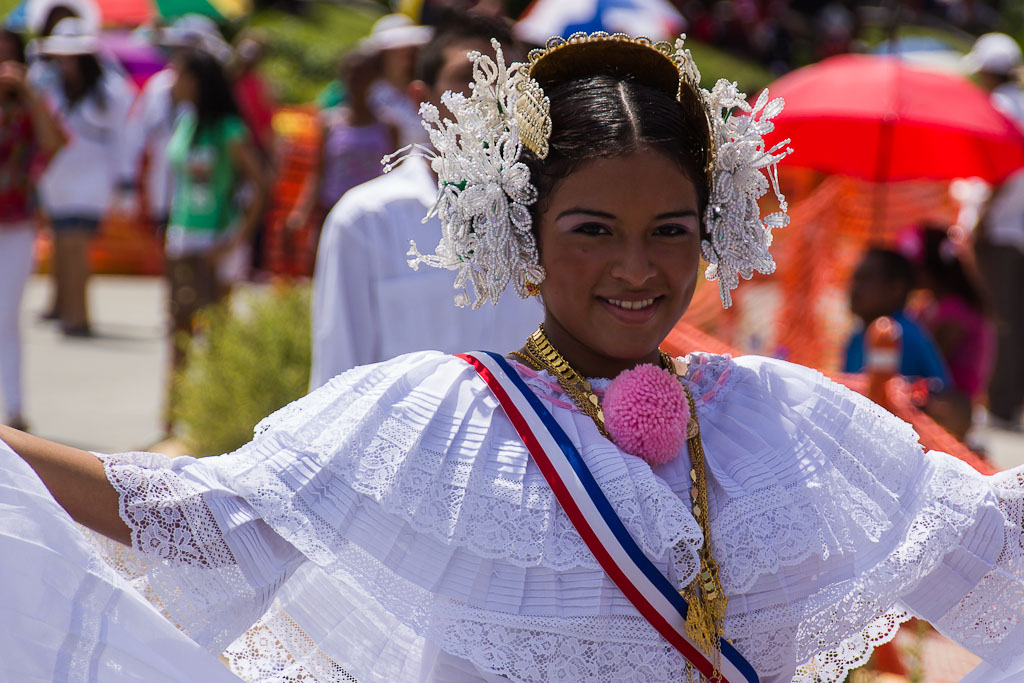After having visited Guatemala during college on a Spanish language course, I was very keen to return to Latin America with Paul.
A good flight deal from Miami to Tocumen International Airport (PTY) near Panama City allowed us to do so.
In the past we hesitated to travel to the region due to two reasons. The first and probably the most important one was safety. Back on my language trip in Guatemala we had local police guarding us in dodgy areas. If it is only the two of you on the road with most of your precious possessions, then you have to be more careful and find your own safety barriers.
The other reason for hesitating to travel there were costs.
Travelling to the region from Europe together with a good hotel and additional costs can become quite expensive. The arrival experience in Panama was surprisingly very good especially in comparison to all the other countries we’ve been to.
The U.S. is the best example for such a comparison. When you are simply checking into a flight to the U.S. from abroad, you are sometimes being interrogated like a criminal before you even enter the airport security check area and on arrival (especially in Miami) you have additional questions and long waiting queues waiting for you.
In Panama you felt like a normal human being. A sweet Panamanian greeted us with a smile and then he handed us a FREE basic tourist insurance which was wonderful.
As we exited the airport we were immediately approached by a man dressed in some kind of white uniform. He brought us to a taxi with a driver dressed in the same manner.
In Panama are two types of taxis. The kind of exclusive and more pricey ones (more modern cars with the drivers in the white uniform) and the standard taxis (usually older cars and the drivers are not dressed up).
The driver brought us safely to our hotel.
Radisson Decapolis Hotel
We stayed at the Radisson Decapolis Hotel in the modern Punta Paitilla district. The room (Business Room) was good and the funniest thing about it was some photographs on the wall of local tribes. Although you could literally see the upper body parts of some women exposed, the photos were very tasteful.
The hotel had a normal sized, well equipped gym and a rooftop pool. The bar area was ok although some of the staff needed some training with regard to certain drinks.
Click here to visit the website of Radisson
Paul was quite surprised that most of them did not speak English and so he had to rely on me for the translation. The breakfast spread offered a variety of items and the hotel’s best advantage was its location because it was attached to the Multicentro shopping mall.
The prices of clothes inside the mall were a bit higher than the U.S. and if you have the option then you are better off shopping there. The food court inside the mall was excellent. There were several options available and many locals ate there, too. Seeing locals in restaurants is always a good sign!
In the lower level near the car park was also a proper convenience store.
Inside the mall, I was also able to practice my Spanish again. I was especially proud of myself when my hairdresser did a wonderful job. Paul went to a men’s hairdresser which spoke English. Both haircuts were the best we had in a long time!
Trip to the Panama Canal
Our first trip was to the Panama Canal. The hotels in Panama City work together with the exclusive taxis and we assume that the hotel staff gets a cut off the bill which made the negotiations even harder than normal.
During these negotiations you somehow start to feel just like a walking wallet.
After all, the international translation for tourist = cash cow!
The driver and the concierge thought that 45 min at the Miraflores Locks Visitor Center at the Panama Canal would be enough even though we thought otherwise. We went there in the afternoon and on arrival had to wait at least 30 min at the observation deck until a boat was in sight and so we had to extend the 45 min to an hour. Our driver wasn’t very happy about that but if you visit the Panama Canal you really want to see a boat going through the lock or else what is the point?
In hindsight, we probably would have been better off just to book a one way taxi because this way, we would not have felt the pressure of leaving. Outside the visitor centre were several taxis waiting for new passengers. There is no time limit for your visit. You can watch the vessels for hours.
On our visit the vessel went through the locks at around 4pm.
Apparently you cannot know for sure when a boat is travelling through the locks, however, you are likely to witness it in the afternoon. Visiting the Miraflores Locks was interesting. It is incredible how they can fit such huge vessels through the locks. At the end of our video here you can see how a vessel is entering the locks.
The Panama Canal was built by the USA between 1904 and 1914. The USA kept control over it for numerous years which caused a love hate relationship between the two nations and so the US eventually signed a treaty and handed the full control to Panama on 31st of December 1999.
There are 3 locks operating at the Panama Canal and two additional locks for larger vessels are currently being built. You can also visit another visitor center at the Gatun Lock near Colon which is on the other side.
Follow this link to visit the official website of the Canal – there are also some pretty cool webcams!
Panama Independence Day Celebrations (el dia de la independencia de Panama)
Click here to see our video of the parade on the 3rd of November in Panama City.
For our next adventure we decided to walk instead of dealing with a taxi. It was the 3rd of November, which is the Independence Day, when Panama became independent from Columbia in 1903 and so we headed towards the town centre to uncover what this special day was all about.
As we walked from the Punta Paitilla district towards the old town, we were very surprised to find a very well laid out walking and cycling path completely away from the busy roads.
The walkway is called Cinta Costera (Coastal Strip).
Along the path were exercise machines and further along were several sporting courts. This area was pretty good and as there were mostly families there, it felt fairly safe there.
You could soon hear Latin music from afar. The parade starts in the old town and runs to the beginning of Cinta Costera.
Mostly young Panamanians took part in the parade. Their parents followed them on the side and watched out for them. It was a very hot day and understandably some of the kids were quite tired at the end of it. It felt a little bit like a mini carnival in Rio. Those colorful clothes mixed with Latin rhythms were excellent.
Visiting the Old Town (also known as Casco Viejo or Ciudad Antigua) during the Flag Day
On the next day, the 4th of November we headed into the old town.
The 4th of November is the Flag Day in Panama and the houses all over town were decorated with flags and the national colours. Parades were also held on this day.
As we got closer to the old town, the atmosphere changed a bit. There were a few more dangerous characters around. You have to be especially careful at the fish market/harbour area and in the old town.
The old town was full of celebrating Panamanians. You can see various old colonial buildings there.
At Plaza de Catedral (also known as Independence Square), is the museum of history of Panama and the Panama Canal Museum. The Canal museum (Museuo del Canal Interoceanico) exhibits a permanent collection featuring the history of the Panama Canal and from time to time it also showcases special exhibits.
Another characterful square is the Plaza Bolivar which is named after Simon Bolivar who was responsible for the independence from Spain. There are a few cafes around this square and inside it you can see the statue of Simon Bolivar.
If you walk along the street Calle 4 and Avenida Central, look out for the Casa Góngora.
It is one of the oldest houses in Panama. It was built around 1760 and is named after Paul Góngora Caceres who was a famous trader.
Today it serves as a cultural and art centre. Another interesting building is the Palacio de las Garzas (Presidential Palace) which means Palace of the Herons. It is named Herons because of the African herons which were made a fixture in 1922 by President Bellisario Porras at the suggestion of the famed Panamanian poet, Ricardo Miro. The cover image of this post shows you the white Presidential Palace.
The old town is definitely worth seeing. You just have to be more careful there. It is best to go there with someone else and not at night time.
Unfortunately we didn’t have enough time to see more of Panama. Some of the traditional tribal villages seem very characterful and hopefully we will return one day.
Click here to see our video feat. 3 sights in Panama City
Follow this link to see our short video feat. the parade on the Flag Day, the 4th of November
This link shows you our Christmas Time in Panama Video – feat. Christmas Decorations in the Multicentro Mall
Click here to visit the Official Website of the Republic of Panama
Here is a link to the website called Casco Viejo – it is a very good resource if you are planning to visit the old town

